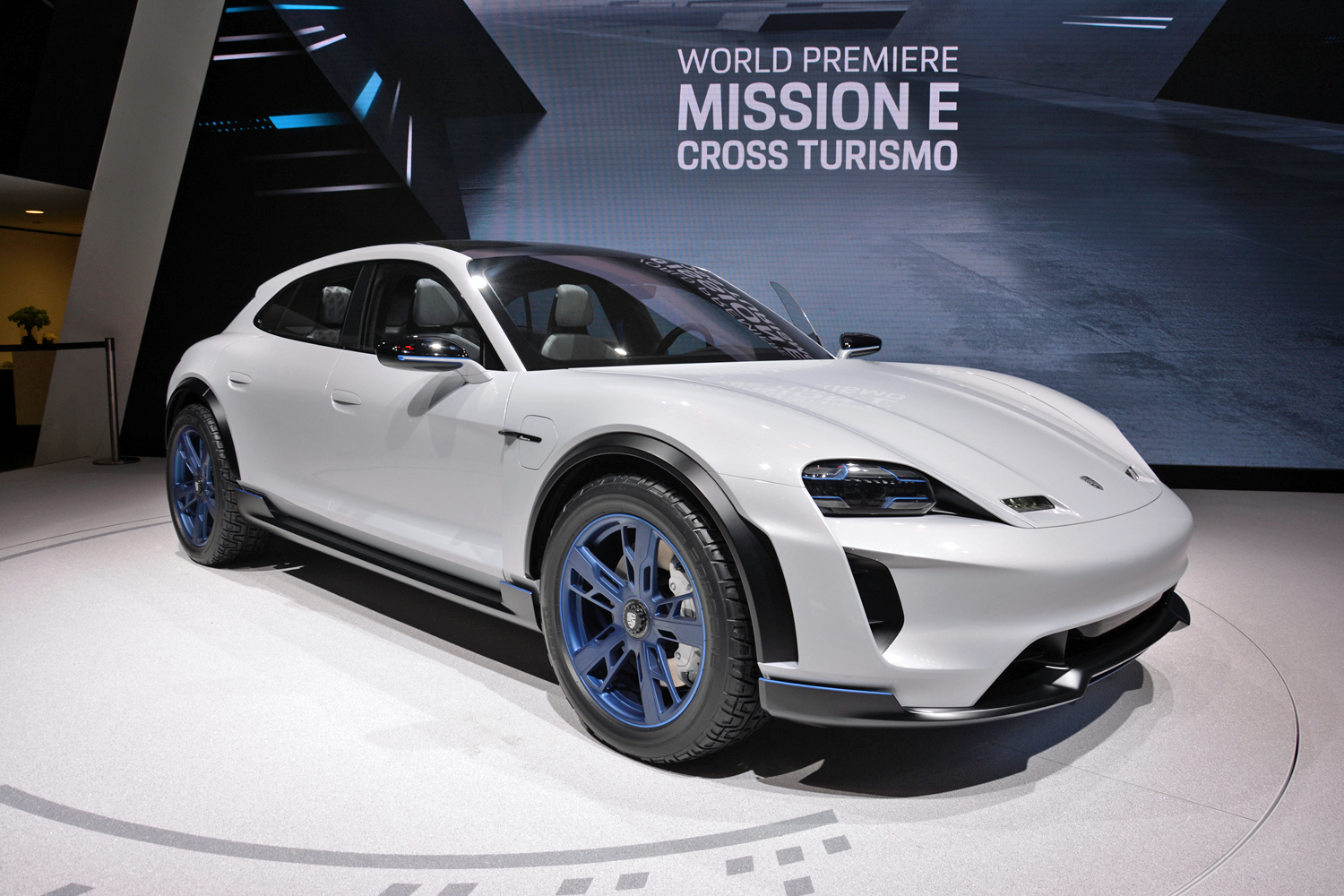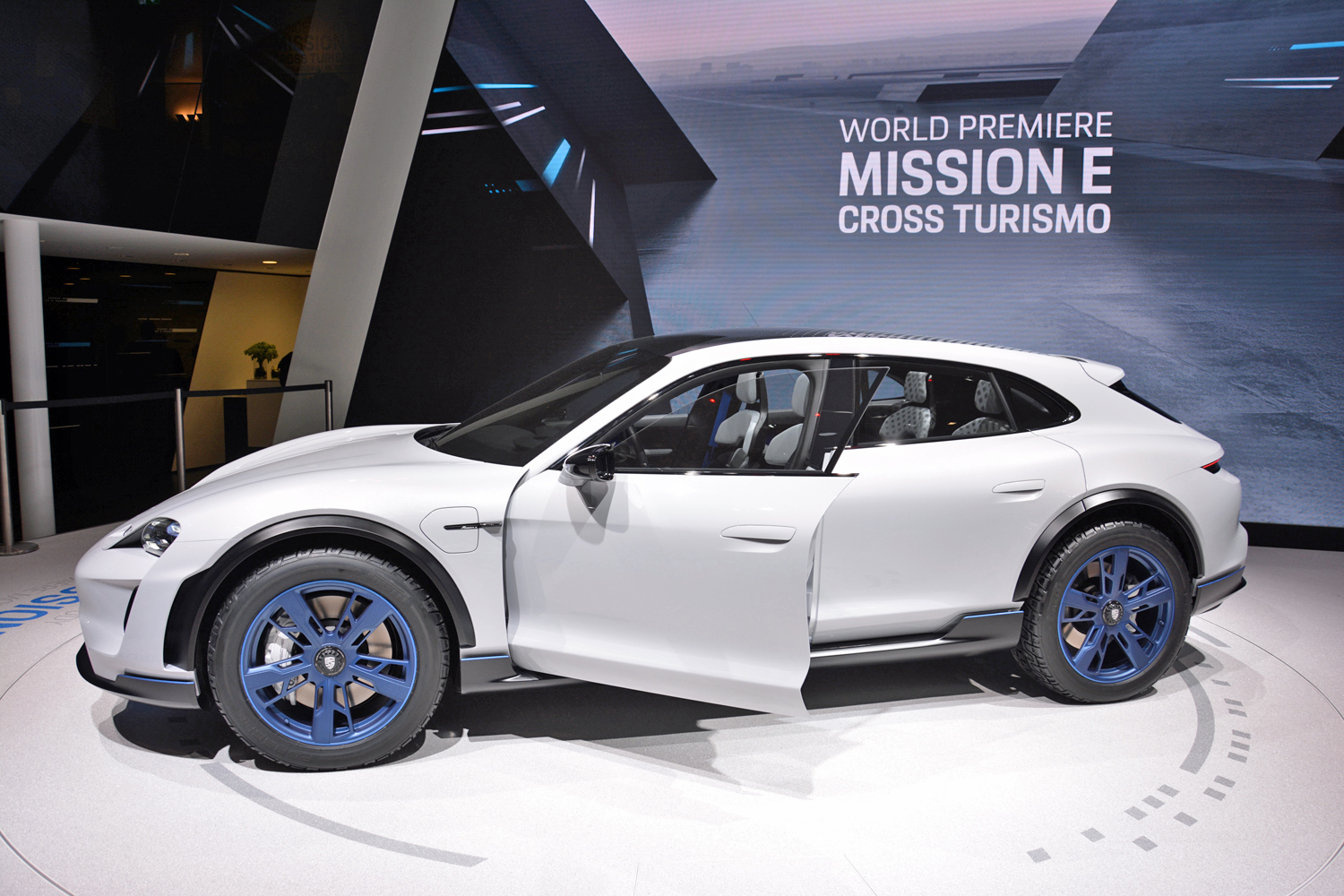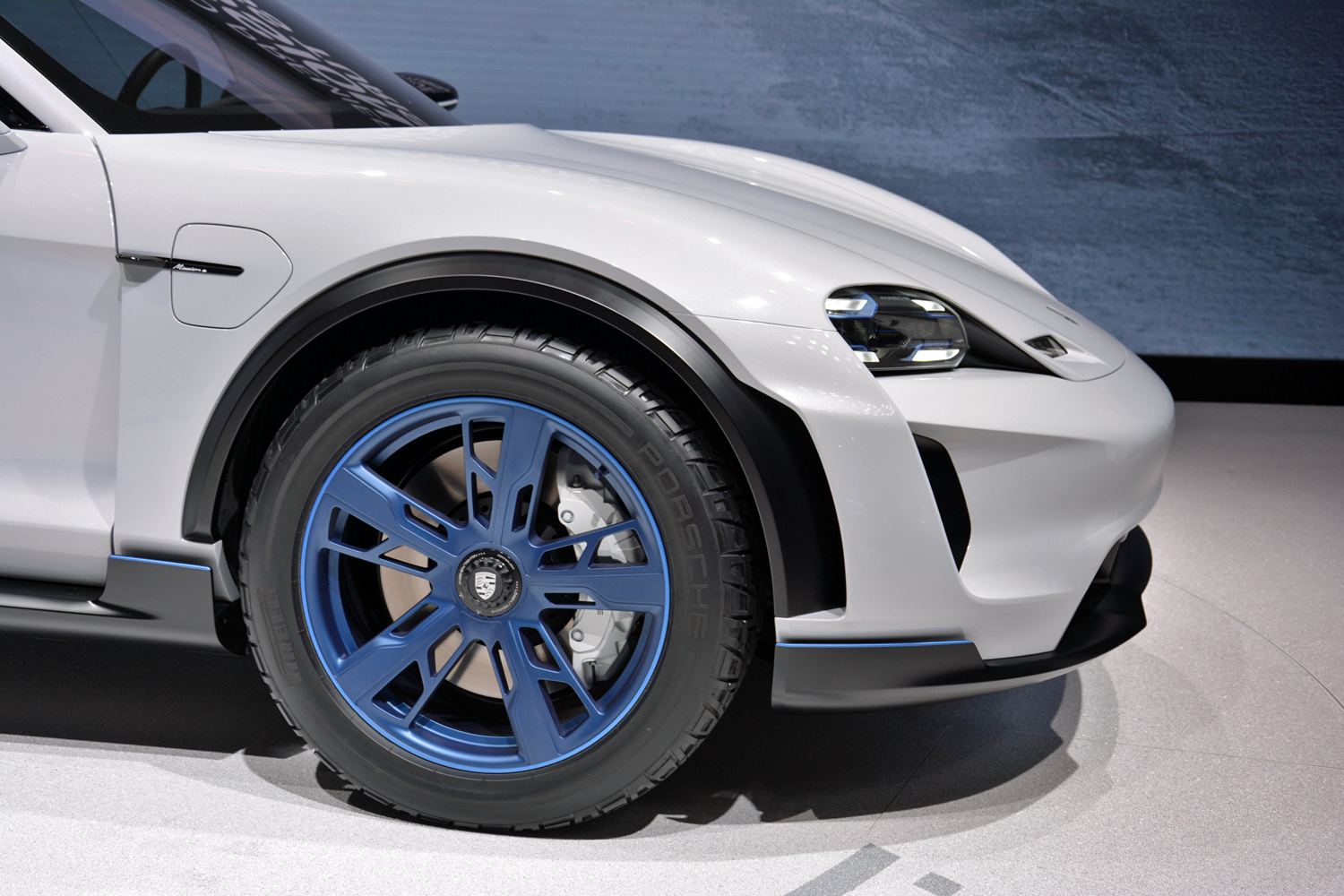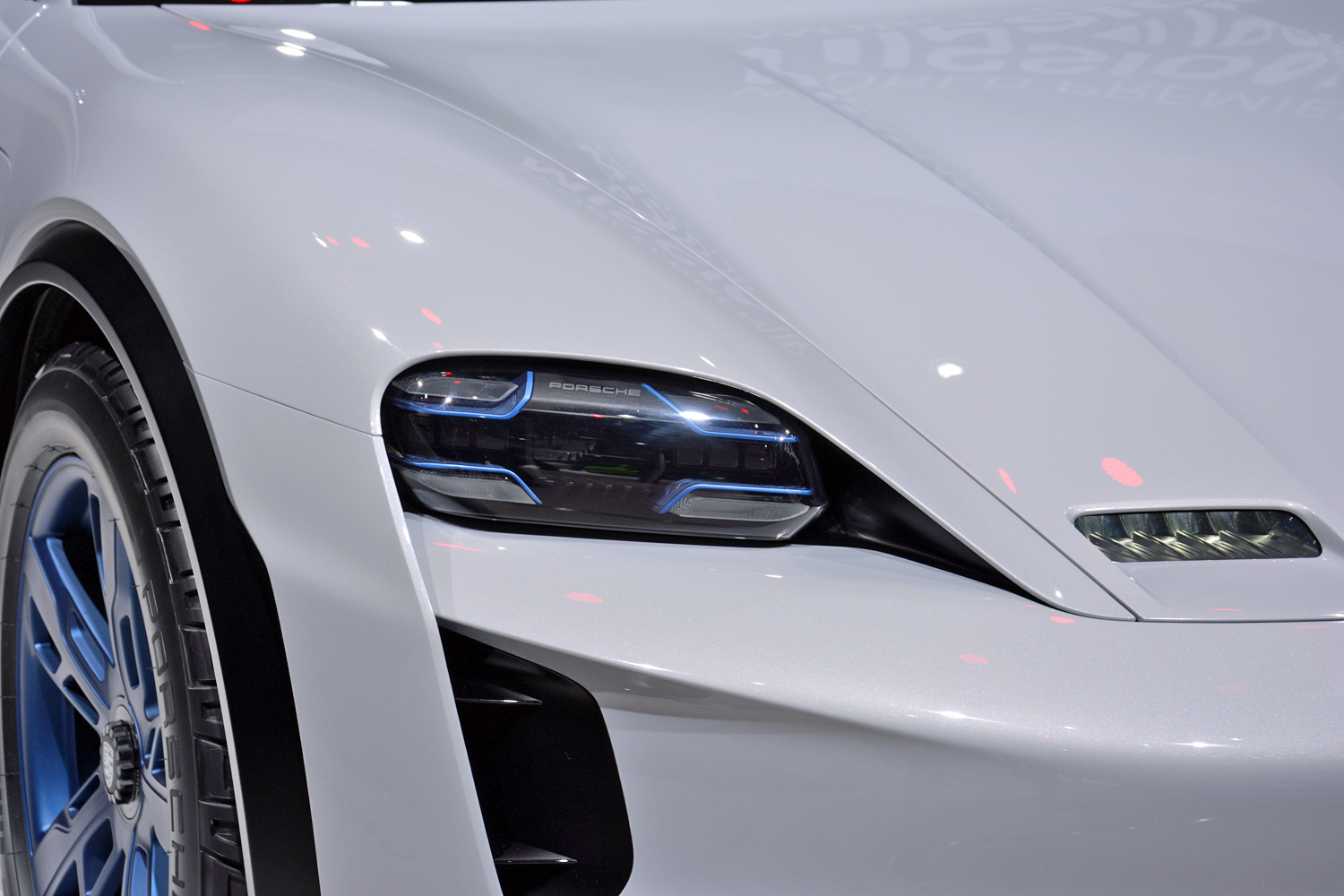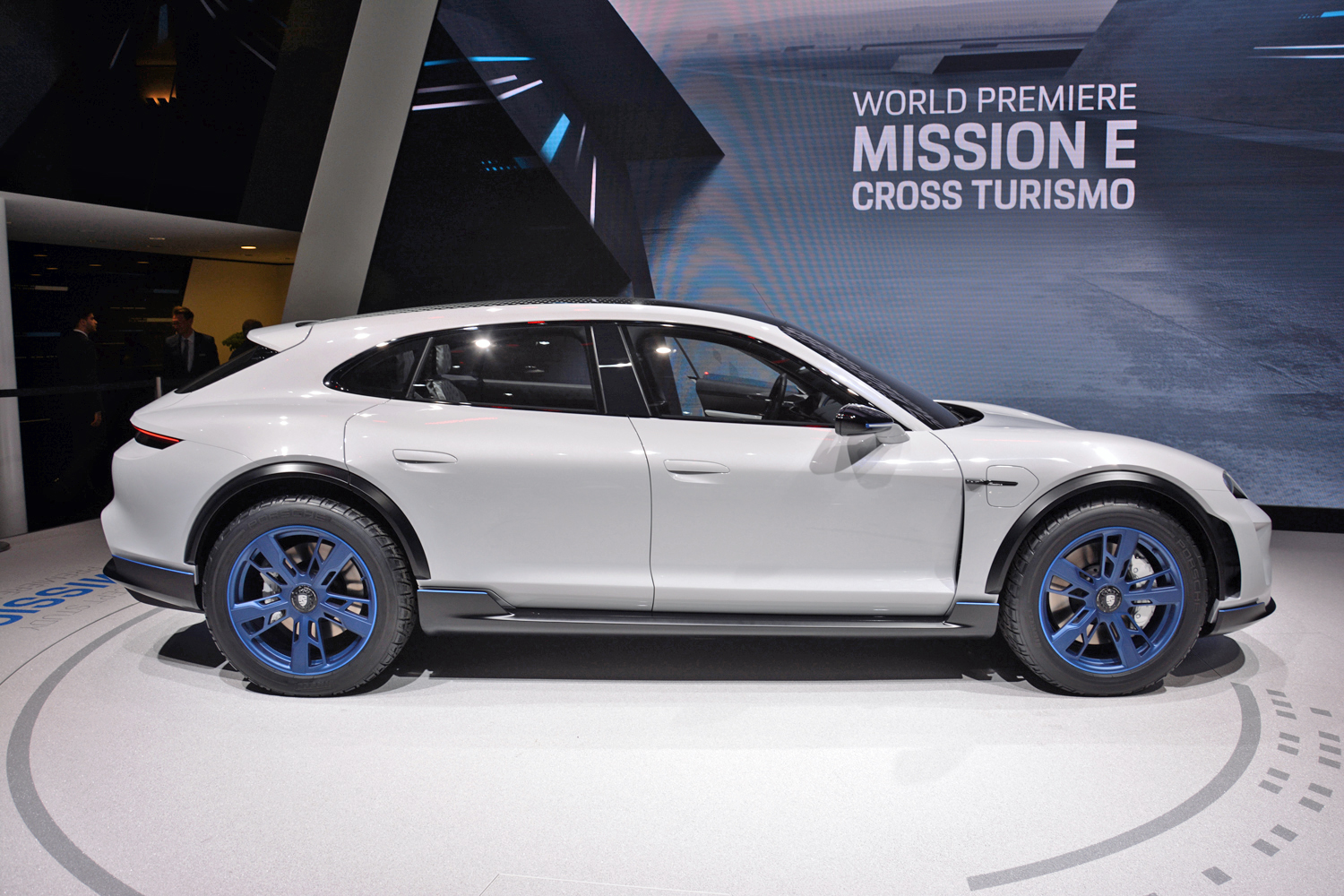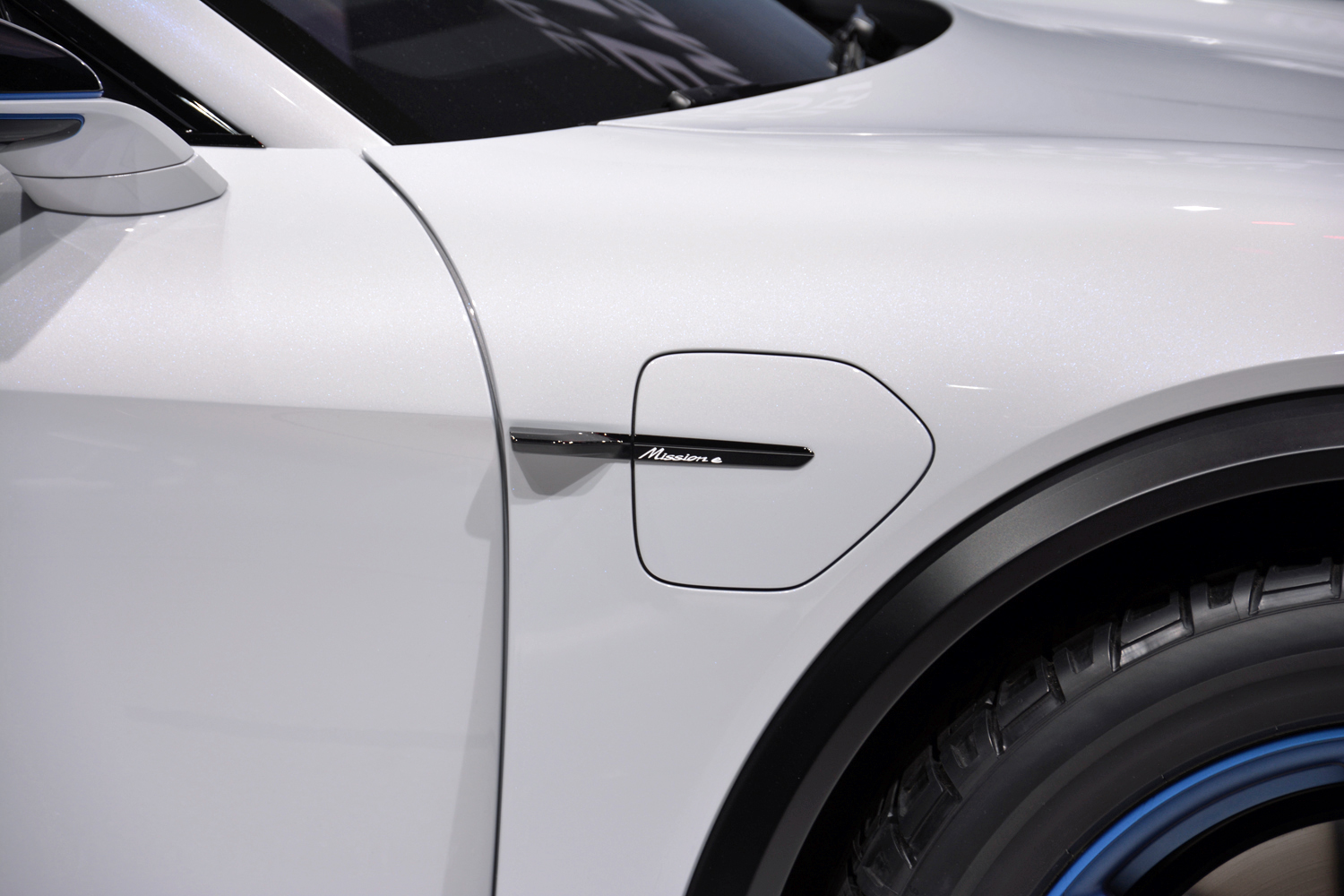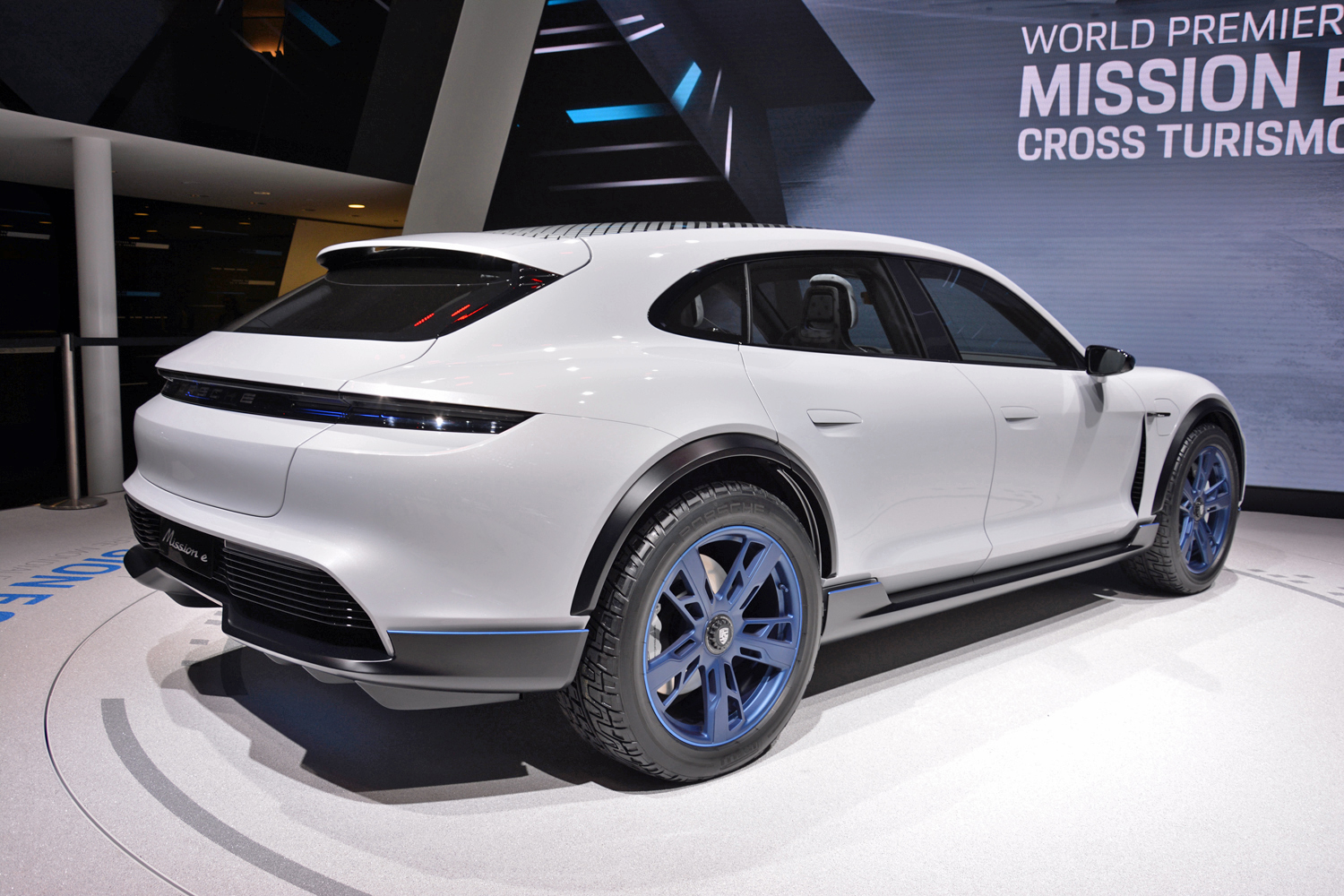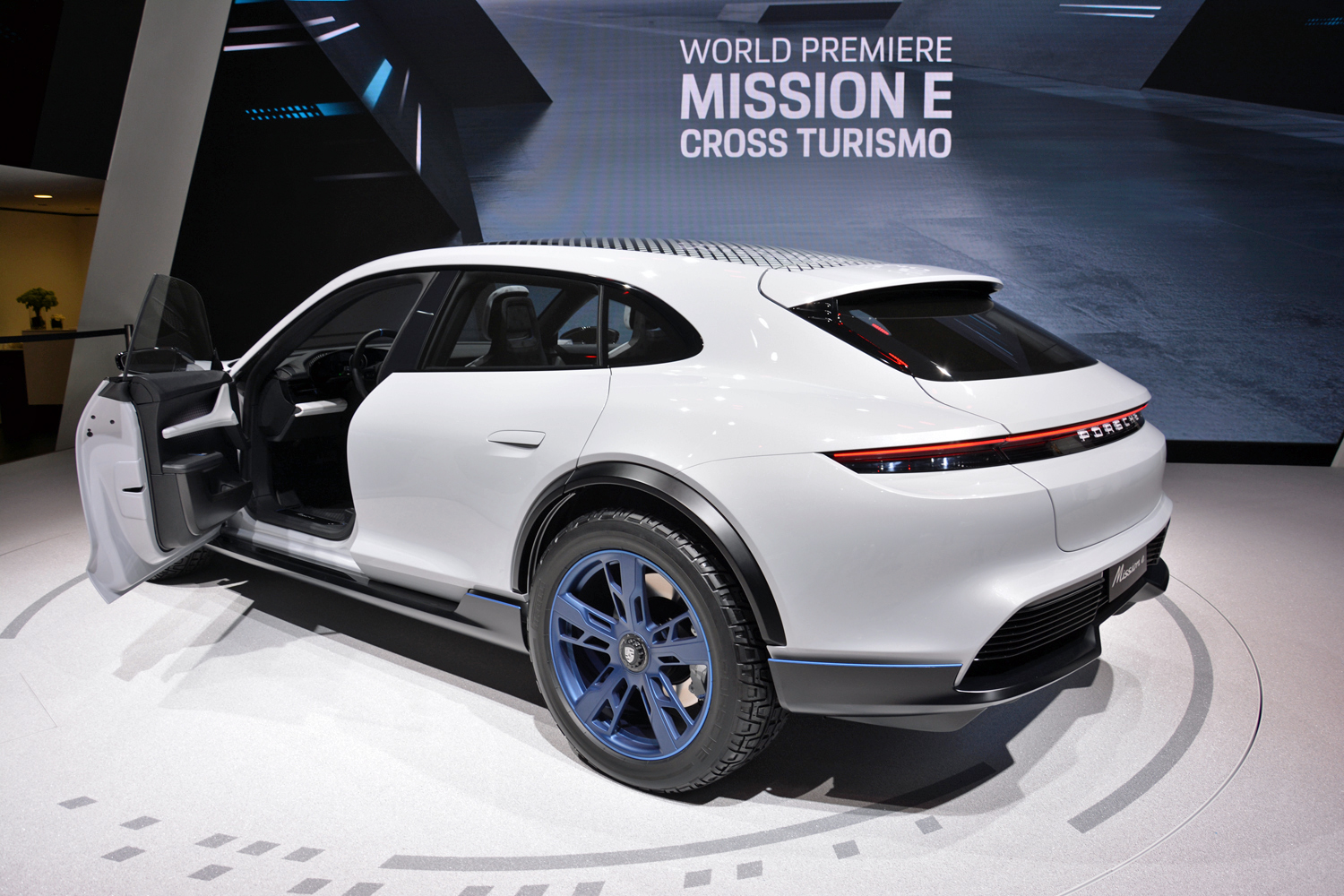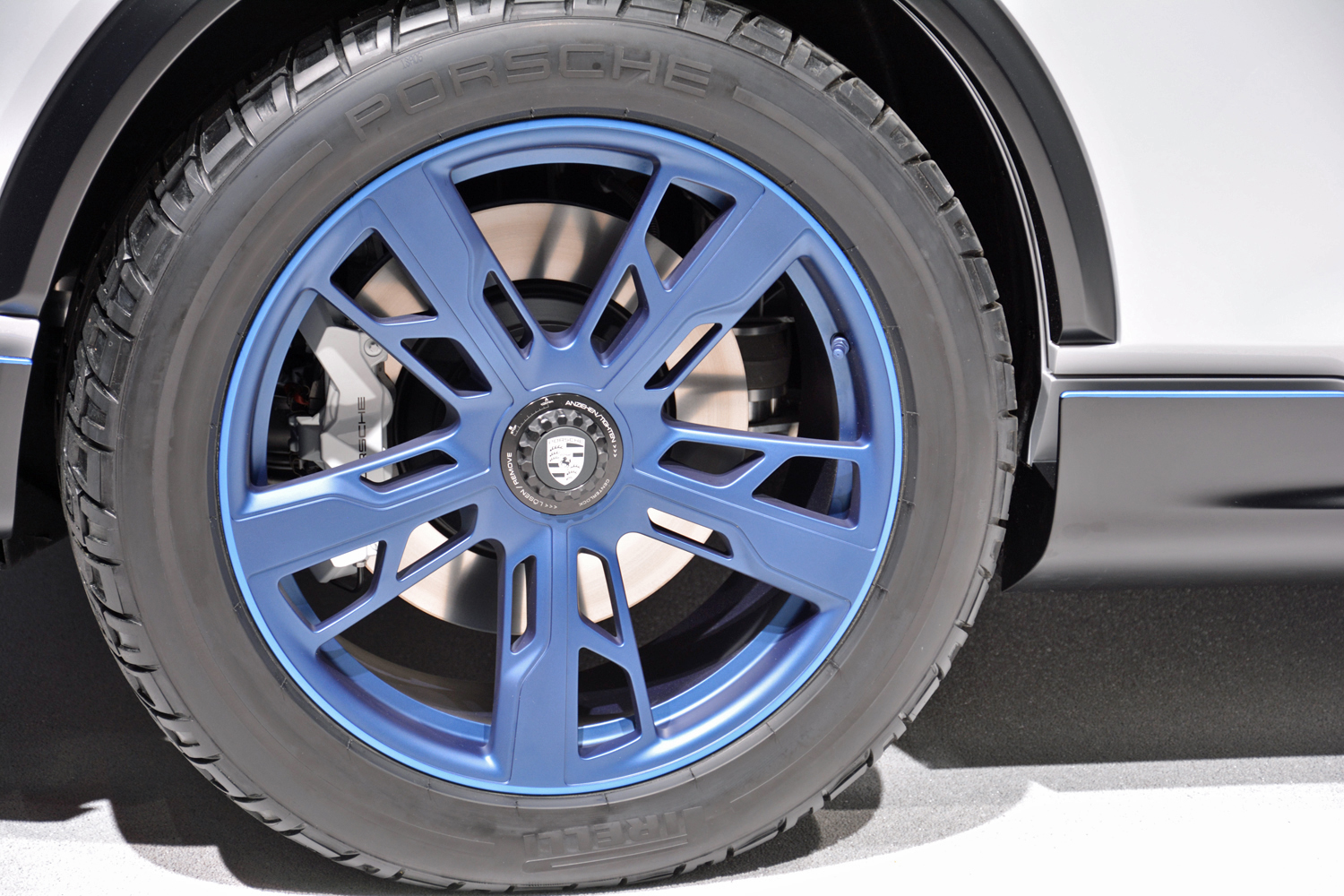Porsche took its first step in the station wagon segment when it introduced the Panamera Sport Turismo. It will add a second long-roof to its catalog of performance-bred models in late 2020, and the sleek-looking Mission E Cross Turismo concept unveiled at the 2018 Geneva auto show hints at what it will look like.
The German firm explained the design study evolved from the Mission E concept that made its debut at the 2015 Frankfurt auto show, and that will make its debut as the Taycan in September 2019. Some of the styling cues (including the 911-inspired low hood and the rectangular headlights) come straight from the original design study. It sits taller than the Taycan, which nearly hugs the ground as it goes around a bend, and it looks more rugged thanks to add-ons like back trim around the wheel arches and the rocker panels.
On one hand, this is a completely different kind of Porsche. On the other hand, we would be remiss not to point out it reminds us a little of the toughened-up 959s that won the grueling Paris-Dakar Rally in the 1980s. Porsche’s off-roader heritage goes well beyond the Cayenne.
Designers looked toward the future, not the past, to put together an interior that’s high-tech while remaining intuitive to use. The driver faces an evolution of the Mission E’s dashboard that looks much closer to production. There is a wide, wing-shaped TFT screen in lieu of the instrument cluster, plus two additional screens that stretch nearly the entire width of the dashboard. The slanted center console incorporates another touch-sensitive surface the front passengers use to adjust the climate control settings. The only buttons are on the multifunction steering wheel.
Eye-tracking technology puts the information the driver wants front and center. If a weekend getaway is in order, Porsche’s Destination app helps the passengers plan by suggesting potential destinations, points of interests, and charging stations along the way. The software illustrates what the brand means when it says it’s going digital.
The Cross Turismo is a station wagon, an electric one at that, but it’s a Porsche above all. It is powered by a pair of electric motors that join forces to deliver 600 horsepower to all four wheels. Stefan Weckbach, the head of Porsche’s electric vehicle project, told Digital Trends that Porsche teamed up with an external supplier to design the Taycan’s motors. They draw electricity from a lithium-ion battery pack.
Each electric motor lies over an axle, a setup which gives the Cross Turismo on-demand all-wheel drive, while torque vectoring and dynamic chassis control (DCC) technology boost driver engagement. The wagon takes merely 3.5 seconds to reach 60 mph from a stop, and engineers went to great lengths to ensure it can do that over and over again without losing performance. An 800-volt charging system provides a 250-mile charge in just 15 minutes. Alternatively, wireless inductive charging can also top up the lithium-ion battery pack.
Production of the Porsche Taycan Cross Turismo will begin in late 2020, so it likely won’t reach American showrooms until early 2021. Pricing information and full specs will be revealed closer to its on-sale date. It will join the Taycan sedan in Porsche’s growing electric car portfolio, and the company will continue its electrification offensive during the early 2020s with a battery-powered Macan.
Updated on March 15, 2019: Added production timeline, more specs.
Editors' Recommendations
- Porsche’s second electric model is a sports car in hiking boots
- Polestar’s Precept concept is an electric fastback with a recycled interior
- 2020 Audi E-Tron Sportback is all about style, but still has substance
- If you want to drive this electric Jaguar, you’ll have to play Gran Turismo
- Lexus plugs in its electric car offensive with an innovative concept
